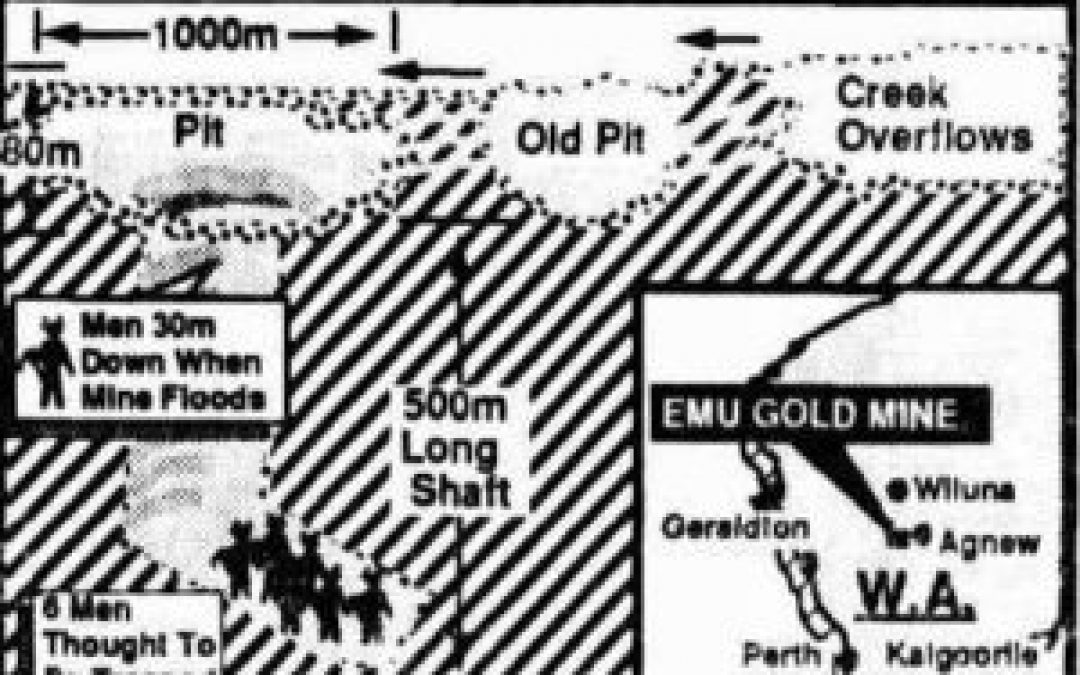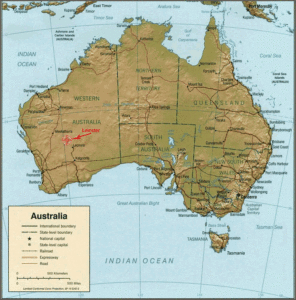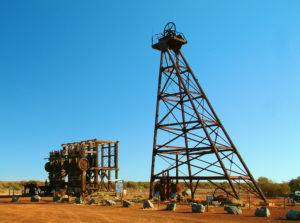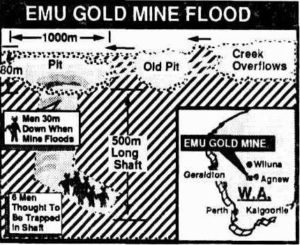On the 13th June 1989, six men died in what was the worst mine disaster in living memory in Western Australia. Not since the Great Boulder Disaster in 1904, 114 years ago, when 5 men lost their lives in one accident has there been such a tragedy. It happened at the EMU Mine near Leinster, Western Australia.
On the day of the disaster, because of the heavy rains, this particular pit (which was a smaller one adjacent to the larger pit) commenced to accumulate water. The mining crew made preparation to vacate the decline, and all major equipment was withdrawn
As the water began to overflow the narrow neck of ground between the two pits, a mining crew of five re-entered the decline in a large front-end loader to retrieve a pump. As they did so, the neck of ground separating the pits began to erode rapidly, vastly increasing the rate of water flow into the smaller pit. The Manager, seeing this, drove into the pit to withdraw the men. Whilst he was in the decline, the water flow became overwhelming, and the total pit and decline were flooded, drowning the men.
The cruel irony was that in an industry where securing adequate water was a constant challenge, the men drowned. They were victims of a drenching storm that poured water into the Emu gold mine (East Murchison United GM), later renamed Agnew, near Leinster.
The men who lost their lives were:-
Brett Ronald HANSSON age 27
Terreance Michael MARTIN age 28
Kerry William PETERS age 35
Timothy Henry PROCTOR age 30
Darryl Lyall SANDFORD age 27
Initially, some hope existed that they might have been caught in an air pocket, so police divers were dispatched from Perth. Four divers risked their lives by diving into the pit and decline in the hope of finding the miners alive. By entering the decline they faced extreme danger from floating gear and ropes.
The Police Commissioner awarded bravery awards to these four officers:-
Senior Sergeant B. Binney
Senior Constable S. Gask
First-class Constable R. Thomson
Constable L. Parker
CIRCUMSTANCES AND EVENTS LEADING TO THE DISASTER:-
A relatively small open pit, (the 450 pit), which was previously mined immediately south of the much larger AG pit from which the decline was driven, had been used to accumulate water for process purposes.
The EMU mine is located in an arid region (average annual rainfall 254 mm), and to supplement groundwater made in the 450 pits, water from an adjacent creek system had been diverted into it when infrequent rains caused a brief run in the creek system. Prior to the commencement of the development of the decline from the base of the main AG pit, a tailings dam wall had been extended to the south and west of the 450 pits so that it obstructed the flow of the main arm of the westerly flowing creek system.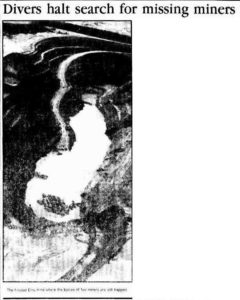
A further significant factor was the mining of a southerly extension of the main AG pit in the upper section, as a result of which the upper sections of both pits were separated by a relatively narrow bridge of weathered surface rock.
On the day of the disaster, exceptionally heavy and sustained rain caused extensive local flooding and the AG pit began to accumulate water. At the same time, the water level in the 450 pit began to rise as the blocked creek system backed up and began to sheet over into it. The mining crew made preparation to vacate the decline following an early afternoon blast. The afternoon shift was cancelled and all major equipment was withdrawn from the decline.
At about the time water began to overtop the narrow neck of ground between the two pits and to cascade into the south end of the main AG pit, the mining crew (three men), the electrician and the Underground Manager re-entered the decline in a large front-end loader to retrieve a pump. As they did so, the neck of ground separating the pits began to erode rapidly, vastly increasing the rate of water flow into the AG pit.
The attention of the Registered Manager was drawn to this by persons standing at the pit top. The Manager drove into the pit and down into the decline to withdraw the men. During the short time that elapsed after he entered the decline, the water flow became overwhelming and all six men were drowned. Their bodies were subsequently recovered about 100 m from the portal.
NOTE:- on a personal note, I was working at the Kalgoorlie Courthouse when the inquests were held into these deaths. It was truly awful to see so many families devastated in one day.

